Monterey Car Week is a favourite among supercars to provide a glimpse of their future intent – near or far – and for timeless classics to turn on the spotlight once again. The 2018 edition was held last week and as usual ended with the Pebble Beach Concours d’Elegance. I have handpicked half a dozen superfast cars that stole the limelight with a polar mix of a naturally aspirated V12 to pure electric drives. What is common is that they can accelerate 0 – 100 in less than 3.0 seconds.
Automobili Pininfarina PF0
Automobili Pininfarina used the occasion for private viewings in Pebble Beach of their PF0 electric hypercar concept, at the end of a six-week US launch programme. They have released the below teaser for the world, before continuing into their European and Middle East private preview events. The events were hosted by Automobili Pininfarina CEO, Michael Perschke and Design Director, Luca Borgogno and the feedback indicates that demand will outstrip supply. US is expected to be their strongest market given the demand for electric cars, performance cars and, historically, Pininfarina-styled cars.
It is six months before Battista ‘Pinin’ Farina’s dream comes true at the Geneva Auto Show 2019, where the final design and name of the first production road car designed, produced and branded Pininfarina will be revealed. Luca Borgogno said: “From 2020, the world will see the emergence of luxury electric hypercars that set new standards for performance and visual drama. Cars dreamt about, but not yet seen on the road. As with Pininfarina cars of the past, PF0 has to stand-out in an emerging sector – beauty and performance to make your heart skip a beat. You can see that impact in the PF0 rear view treatment where the car’s performance potential is functionally defined by dramatic wings, and its beauty highlighted by the overall form – purity and elegance of design has not been lost to the battle for downforce or cooling.”
Munich-based Automobili Pininfarina was launched in April 2018 with an ambition to sustainably develop and produce fully-electric, ultra-luxury cars at the pinnacle of design and desirability. Extreme levels of technology and functional design lie beneath the PF0 concept model’s carbon-fibre exterior, and the ability to accelerate from 0 to 100 kmph in less than two seconds, breaking the 400 kmph (250 mph) top speed barrier, and providing a potential zero emissions range of over 483 km (300 miles).
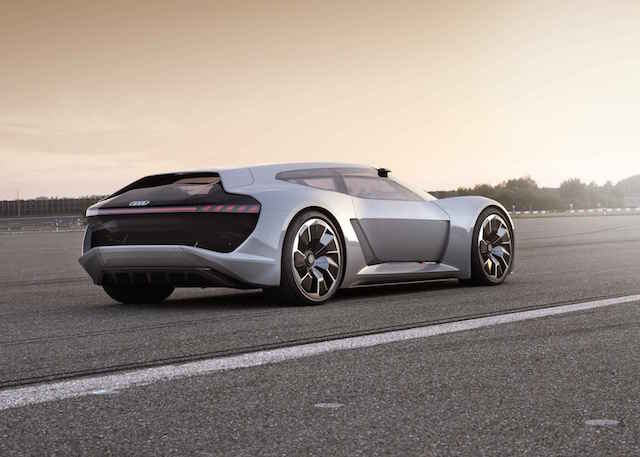
Audi PB18 e-tron concept car
The all-electric Audi PB18 e-tron presents a radical vision for the high-performance sports car of tomorrow. The concept vehicle uses a powerful battery and three electric motors to go from 0 to 100 kilometers per hour in just over 2 seconds. Yet, on a full charge of its battery, the car is capable of going close to 500 km. And it can theoretically be fully charged with an 800-volt connection in 15 minutes.
The P18 e-tron is broad and flat, visibly influenced by the wind tunnel and the racetrack. The concept and design lines were created in Audi’s new future-oriented design studio in Malibu, California overseen by Audi Sport GmbH, the high-performance subsidiary of Audi. The technical concept of the PB18 e-tron has benefitted from Audi’s many wins at the Le Mans racing series. The abbreviated name “PB18 e-tron” refers both to the Pebble Beach venue for the premiere and to the technological DNA it shares with the successful LMP1 racing car Audi R18 e-tron.
At first glance, design elements like the side windows that angle inwards and the extremely extended wheel arches, give away the kinship of the Audi PB18 e-tron with the Audi Aicon concept from 2017 – both of them store energy using a solid-state battery. While the Aicon was designed as a fully automated, long-distance luxury cruiser, the PB18 e-tron is for the racetrack and road. Parameters like propulsive power, lateral acceleration and perfect ergonomics determine each detail.
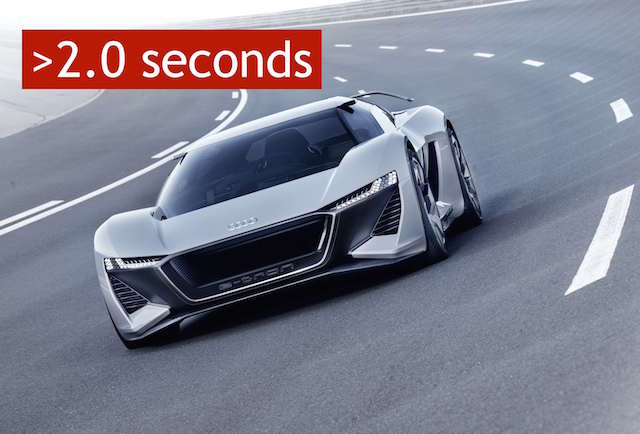
Designed as a radical driving machine, the internal working title at Audi for the showcar project was “Level Zero” – clearly differentiating it from the Levels 3, 4 and 5 of autonomous driving currently in focus at Audi. In the Audi PB18 e-tron, the driver is in full operational control with no complex systems for piloted driving and no comfort features to add weight.
The driver’s seat and cockpit are integrated into an inner monocoque shell that can be slid laterally. When driven solo, the monocoque can be positioned in the center of the interior as in a monoposto (racing car) because, the by-wire design of the steering and pedals doesn’t require a mechanical connection. The PB18 e-tron can also be steered sitting in the side like a regular car, by sliding the monocoque into the side position. There is space for another passenger integrated low above the ground and equipped with a three-point seatbelt.
Audi aims to offer the driver a racing car like experience as in the Audi R18 yet a high degree of everyday usability for the passenger with the PB18 e-tron.
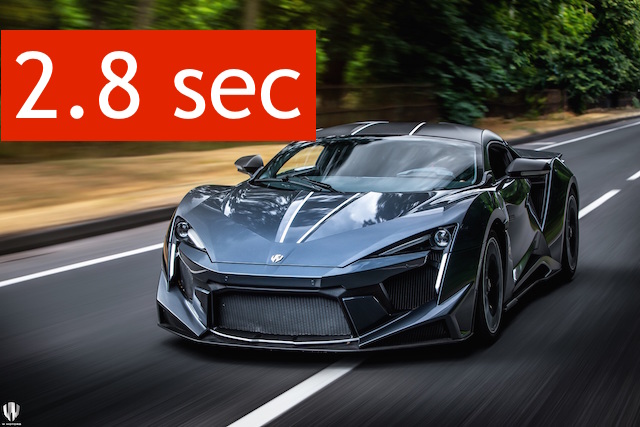
W Motors Fenyr SuperSport
After the encouragement at the Goodwood Festival of Speed in July, the Fenyr SuperSport was seen at the Monterey Week making its appearance at all the stellar events and some private viewings during the course of the week.
The new Fenyr SuperSport is the latest addition to the W Motors line-up of Hypercars focusing purely on performance, power and speed. The hypercar company established in Beirut and headquartered in Dubai has limited its production only 25 units per year, having reached a total of 110 units worldwide. The carbon fiber masterpiece perfectly balances advanced aerodynamics engineering with aggressive
W Motors aesthetics. A 3.8L Flat 6 twin turbo engine will drive the Fenyr SuperSport producing 800 horsepower that drives the wheels through a 7-speed dual clutch RDK. 0 – 100 kmph happens in 2.8 sec, according to its makers, with a maximum speed of 400 kmph.
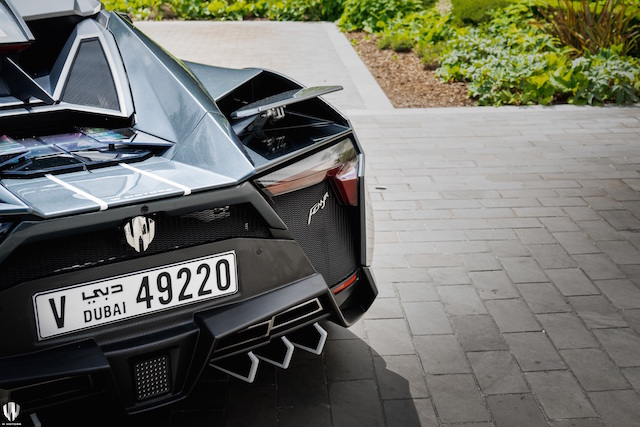
Lamborghini Aventador SVJ V12
At “The Quail, A Motorsports Gathering,” Automobili Lamborghini premiered the new generation of their iconic V12 flagship – Lamborghini Aventador SVJ. SV historically stands for Superveloce – meaning ‘superfast’, and the ‘Jota’ suffix suggests its track and performance superiority: the Aventador SVJ has already claimed its position as the Norburgring-Nordschleife production car record holder, completing the 20.6 km lap in just 6:44.97 minutes. Production is limited to 900 units.
The new model is four-wheel drive and four-wheel steering for technical supremacy while the use of lightweight materials, racing solutions and ALA 2.0 active aerodynamic system enables the best ever handling performance. It is powered by a naturally-aspirated V12 engine generating 770 hp and can get from 0 to 100 kmph in 2.8 seconds on its way to a top speed of over top speed over 350 km/h.
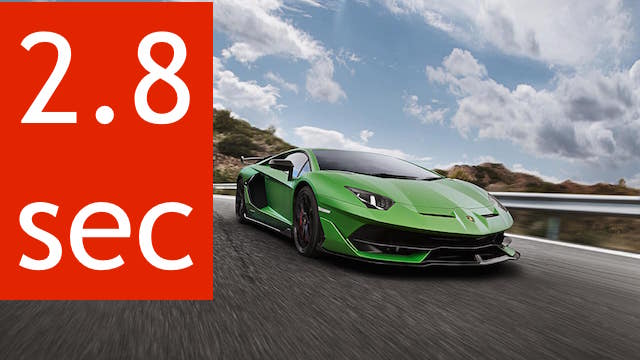
The new edition has a special edition within it, named SVJ 63, created to pay homage to the founding year (1963) of Lamborghini, rich in the use of carbon fiber and available only to the extent of 63 examples.
Automobili Lamborghini Chairman and Chief Executive Officer, Stefano Domenicali calls it “the absolute pinnacle of our super sports car product range”. “The challenge to Lamborghini designers and engineers was to improve the purest essence of the Lamborghini super sports car, drawing on every inspiration from a space ship to a jet fighter.”
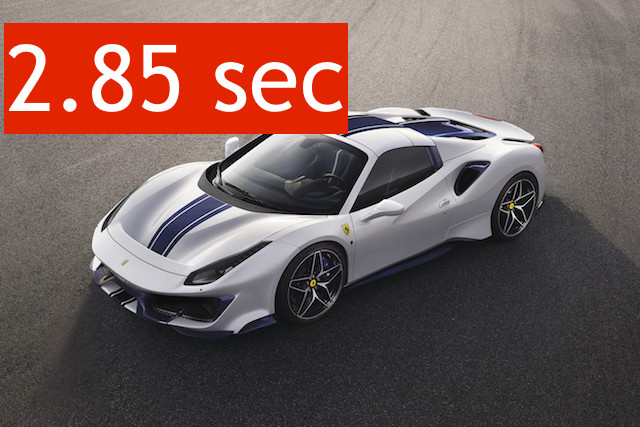
Ferrari 488 Pista Spider
The Concours d’Elegance® happened to be a venue for Ferrari to mark its 50th convertible till date with a special series model, the Ferrari 488 Pista Spider.
The Spider marks an unprecedented power ratio of 1.92 kg/cv, made possible by the adoption of the most powerful Ferrari V8 engine ever. The 3902cc twin-turbo V8 unleashes 720 cv as the torque climbs at all engine speeds for relentless acceleration all the way to the red line. Incidentally, this engine was already in the limelight as the Best Engine for the third consecutive year at the 2018 International Engine of the Year Awards.
The Pista Spider too powers its rear wheels through a seven-speed dual-clutch transmission and achieves a 0 – 100 timing of 2.85 seconds on the way to a top speed of 340 kmph. Surprised? Pista is Italian for “track”.
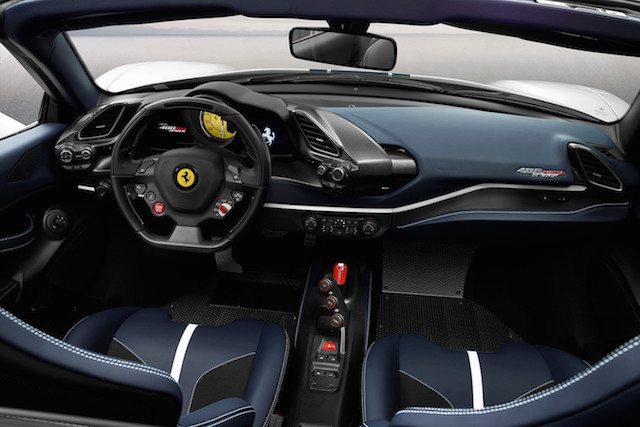
Innovative use of lightweight, pared-back components can be seen in the generous use of carbon-fibre and Alcantara® throughout. While the car features new diamond-finish 20” alloy wheels with a new 10-spoke star-effect design, one-piece carbon fibre wheels are available that are 20 percent lighter than the standard forged alloys. Even the carpets have been replaced by patterned aluminium foot plates and the driver’s-side door handle is just a simple strap! In terms of engineering, the Ferrari 488 Pista Spider is directly derived from the 488 Pista, which encapsulates all the racing experience gathered on world’s circuits with the 488 Challenge and the 488 GTE.
The vehicle dynamics honed for this Special Series 8-cylinder convertible deliver a seamless combination of razor-sharp acceleration, braking efficiency, lightning-fast gear shifting, precision steering, grip, stability and superb handling. Ferrari has equipped its chassis with latest Side-Slip Angle Control system version 6.0, which controls multiple vehicle functions including the traction and stability control, the suspension damping, and the electronic differential. This also includes the new lateral dynamics control system, the Ferrari Dynamic Enhancer (FDE), which makes on-the-limit driving more intuitive, controllable and predictable by adjusting brake caliper pressure.
Now, those are five cars worth dreaming of test driving and wearing out the keyboard for! So, which is the sixth speed demon that was unveiled in the Monterey Week? It is no less than Bugatti’s new Divo that accelerates to 100 kmph from standstill in 2.5 seconds! Click this link to read everything about the Divo now.
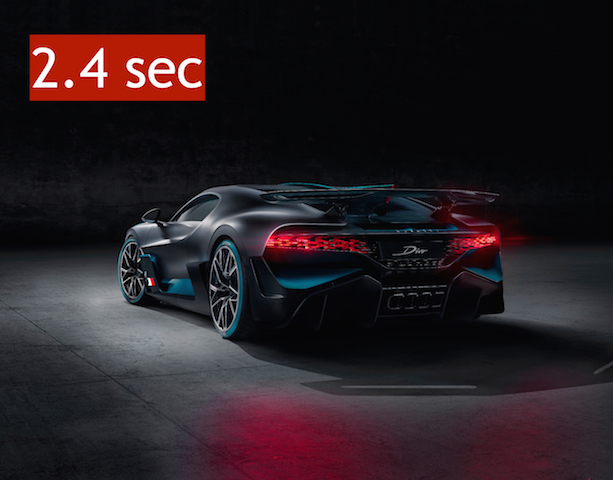

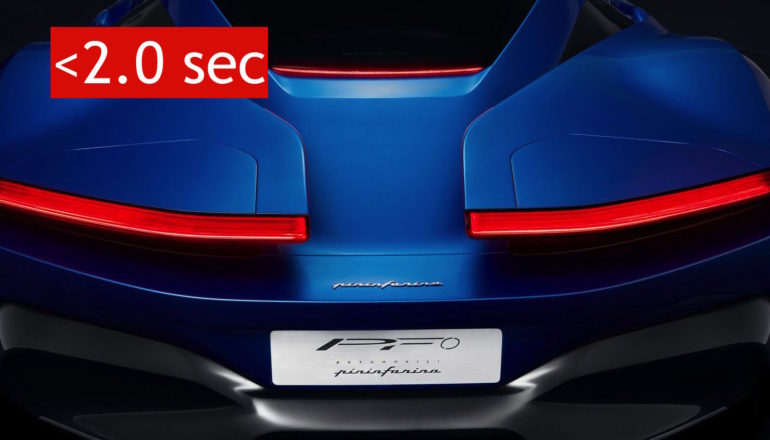




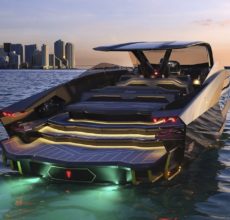







Wow It is amazing. The super cars.